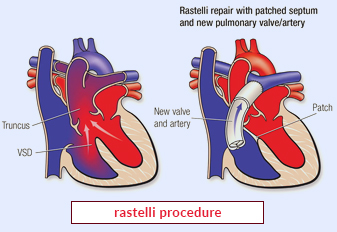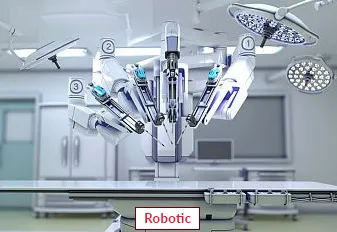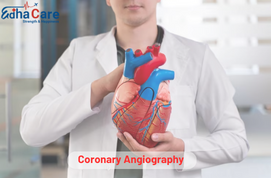Rastelli Procedure

The Rastelli procedure is a surgical intervention used to treat complex congenital heart defects involving abnormal connections between the ventricles and great arteries. This Rastelli procedure redirects blood flow and restores normal circulation, improving the patient's overall cardiac function.
This surgery takes several hours while your child is under general anesthesia in the operating room. The surgeon will make an incision in your child’s chest and open the breast bone to access the heart.
Book an Appointment
About Rastelli Procedure
Rastelli operation, a cardiac surgery named after Dr. Giancarlo Rastelli, addresses complex heart defects like transposition of the great arteries. This intricate Rastelli procedure redirects blood flow, using conduits to reroute it to the correct chambers, enhancing oxygenation. Surgeons create new pathways, allowing oxygen-rich blood to reach the body while redirecting oxygen-depleted blood to the lungs. The meticulous reconstruction of the heart's anatomy during Rastelli procedure aims to optimize circulation, often offering a life-changing solution for congenital heart conditions. This innovative Rastelli procedure revolutionized treatment for complex cardiac anomalies, significantly improving outcomes and quality of life for many patients.
The Rastelli Surgery is a surgical technique designed to correct specific congenital heart defects known as ventriculoarterial discordance, ventricular septal defect (VSD), and pulmonary stenosis. These defects involve abnormal connections between the ventricles (lower heart chambers) and great arteries, resulting in a mixing of oxygenated and deoxygenated blood.
Rastelli procedure success rates vary based on the patient's specific diagnosis, but this is generally considered a low-risk procedure. Many children go on to lead relatively normal lives, though they might need to avoid strenuous competitive sports. Surgically implanted conduits and valves can wear out or develop problems over time, so your child might eventually need another surgery to repair or replace the conduit and/or valve.
Procedure of Rastelli Procedure
The Rastelli procedure is a high complex cardiac surgery used to treat certain congenital heart defects, particularly complex cases of transposition of the great arteries, ventricular septal defect, and overriding aorta. This surgical technique involves rerouting the blood flow and creating a pathway (conduit) to redirect oxygenated and deoxygenated blood to the appropriate chambers of the heart. The procedure aims to correct the structural abnormalities, allowing for more normalized blood circulation and addressing the defects within the heart's anatomy.
-
Anesthesia and Incision: The Rastelli procedure is performed under general anaesthesia. A midline incision is made in the chest to access the heart and surrounding structures.
-
Cardiopulmonary Bypass: The patient is connected to a heart-lung machine, which temporarily takes over the function of the heart and lungs during the Rastelli surgery. The machine maintains blood circulation and oxygenation while the heart is stopped to perform the Rastelli procedure.
-
VSD Closure: The ventricular septal defect (VSD) is closed using a patch made of synthetic material or the patient's own tissue. This closure separates the ventricles, preventing the mixing of oxygenated and deoxygenated blood.
-
Reconstruction of Outflow Tract: The surgeon creates a pathway for blood flow from the right ventricle to the pulmonary artery. This is accomplished by placing a conduit or a valve between the right ventricle and the pulmonary artery in Rastelli Surgery.
-
Reestablishment of Aortic Flow: A connection is made between the left ventricle and the aorta to redirect oxygenated blood from the left side of the heart to the body's systemic circulation.
-
Closure and Recovery: After completing the necessary repairs during Rastelli Surgery, the surgeon carefully examines the repaired structures and ensures proper blood flow. The heart is gradually rewarmed, and the heart-lung machine is disconnected. The incision is closed using sutures or surgical staples, and the patient is transferred to the intensive care unit for monitoring and recovery.
-
Follow-up Care: Regular follow-up visits are essential to assess the patient's recovery and monitor their cardiac function. These visits include imaging studies, such as echocardiograms, to evaluate the repaired structures and ensure optimal blood flow and heart function.
Require Assistance?
Get A Quick Callback From Our Healthcare Experts
Other Specilities We Cover

Robotic Heart Bypass Surgery

Heart Bypass Surgery




